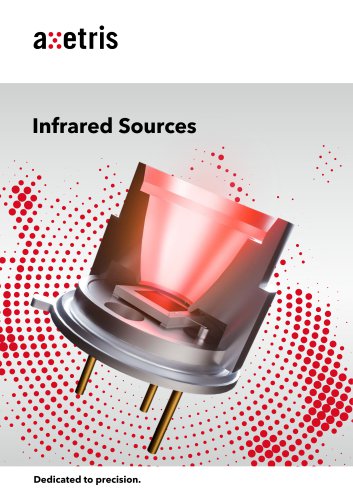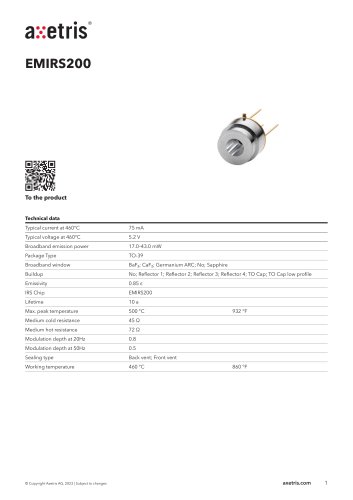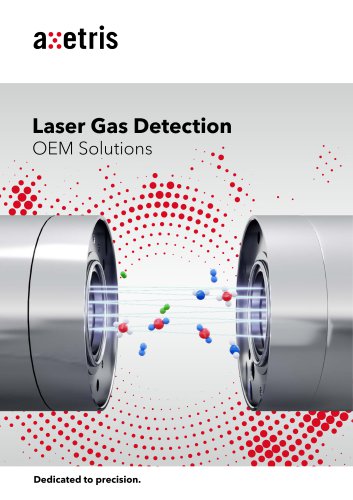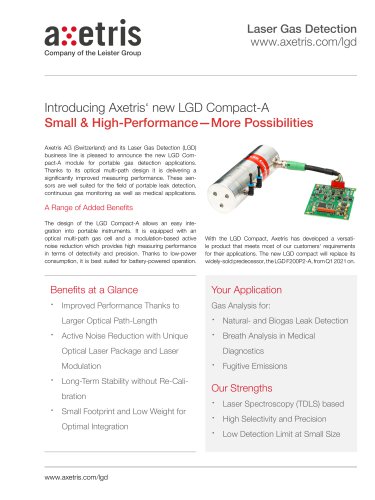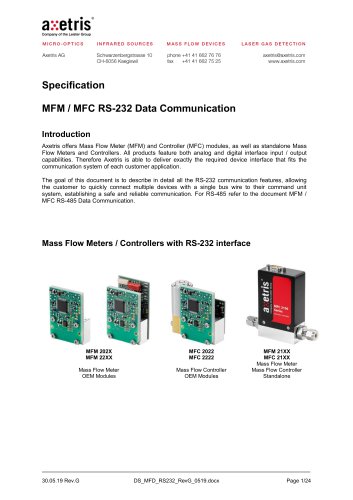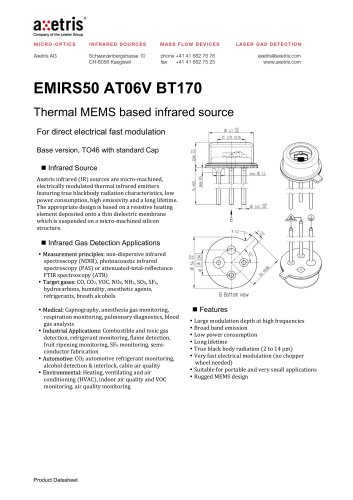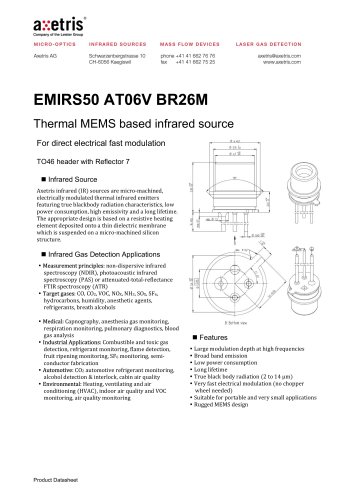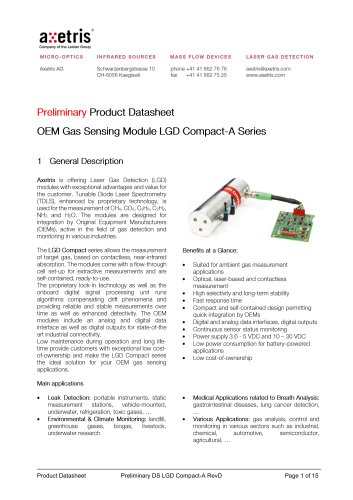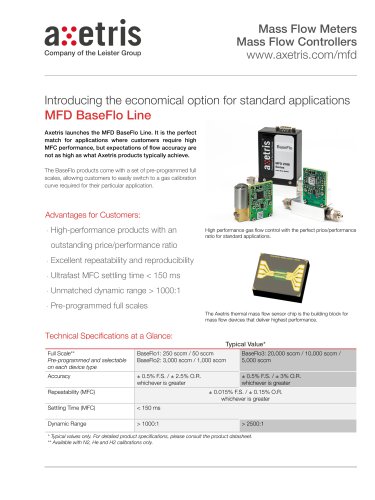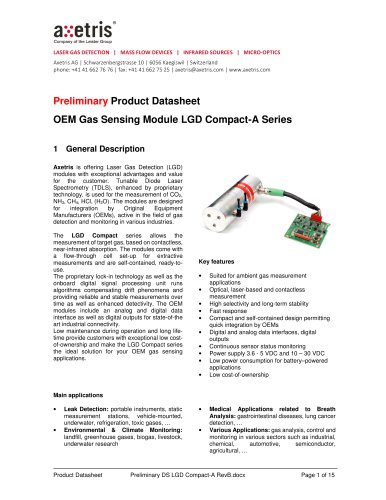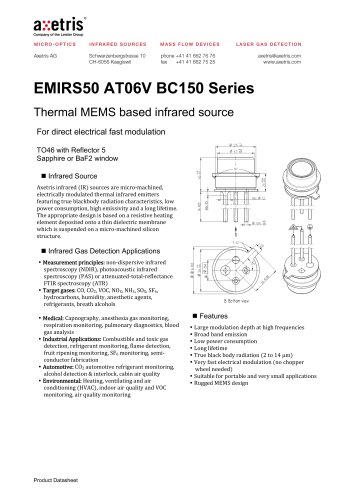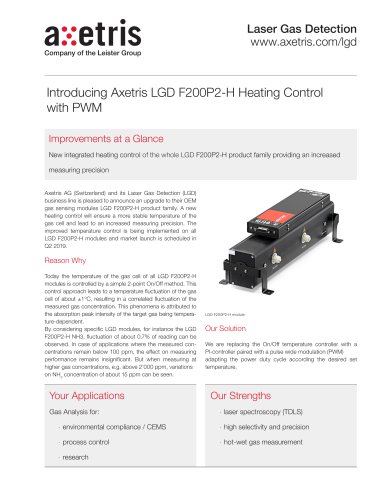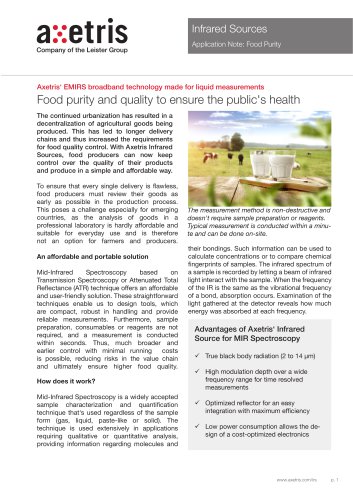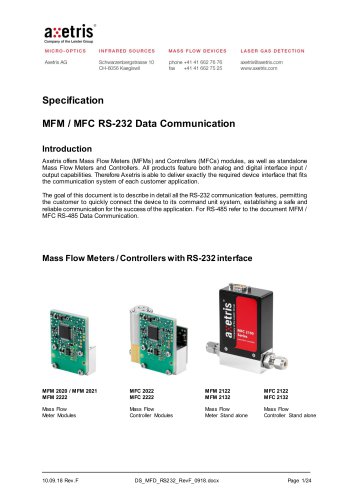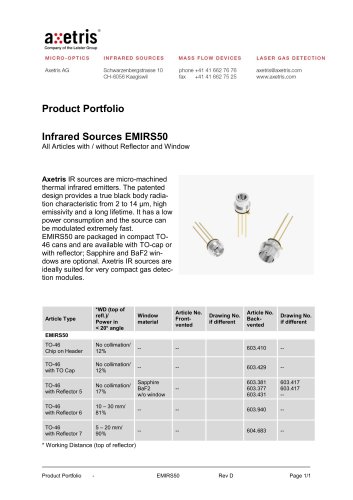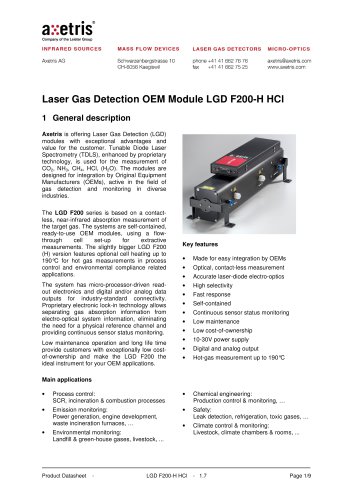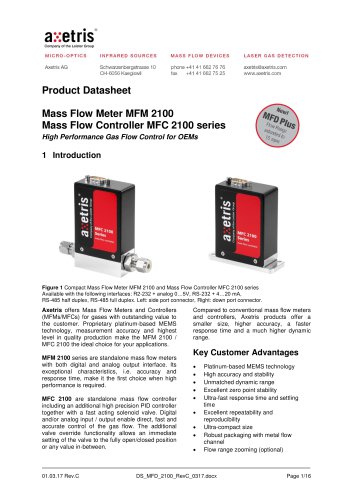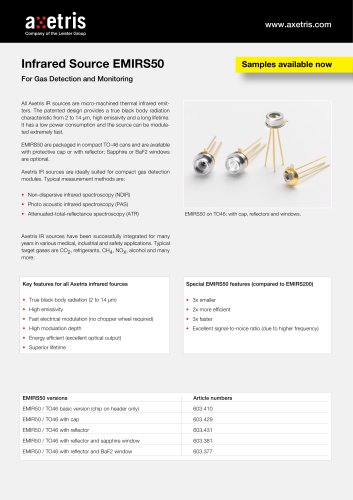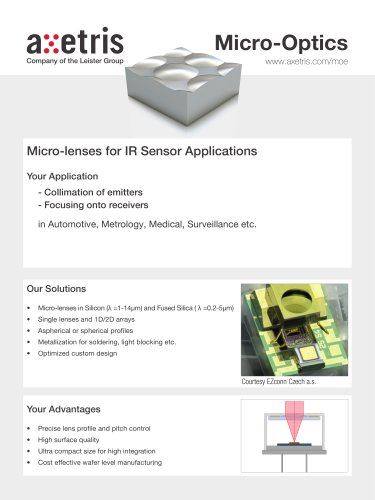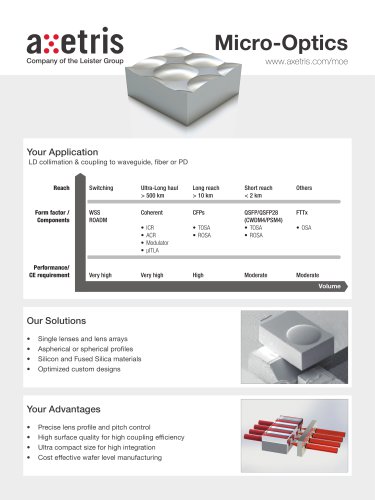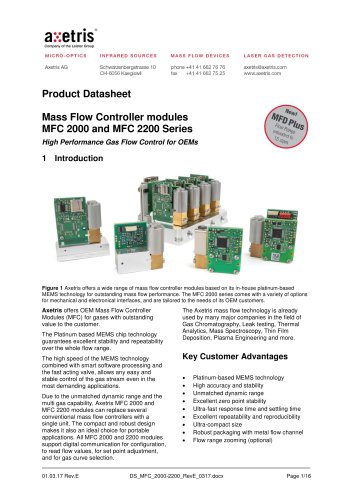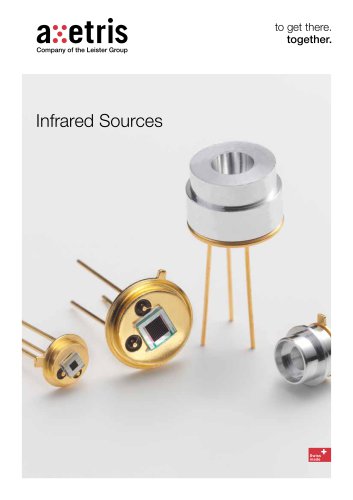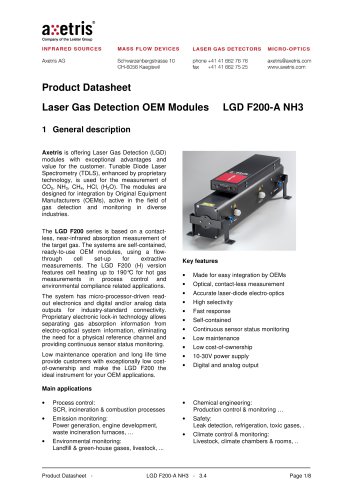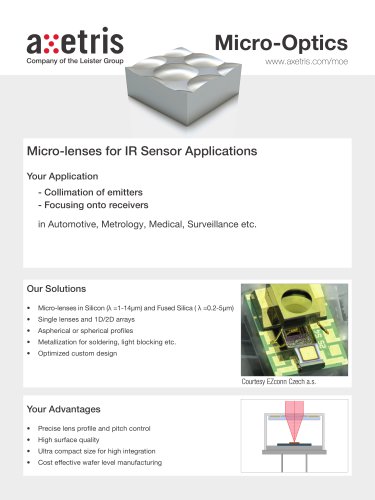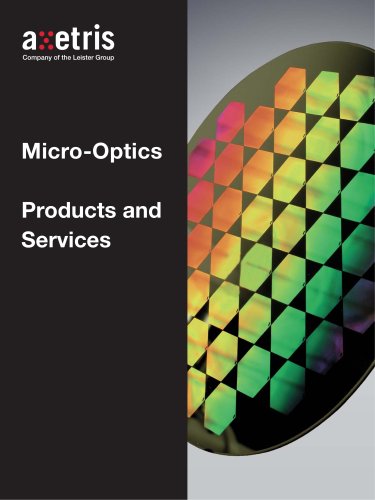
Catalog excerpts

SMALL INFRARED SOURCES: POWERFUL AND ENERGY EFFICIENT WHY SMALLER CAN BE BETTER The Non-Dispersive-Infrared (NDIR) and Photo-AcousticSpectroscopy (PAS) sensor application segments are experiencing fast, world-wide growth. The growth is due to the increasing demand for monitoring and control, as well as the ability to switch from classical methods to infrared based applications when gas selectivity, long life-span and high-accuracy are needed. One of the industry leading trends is to continuously minimize size and optimize the sensor units to serve new market segments. Miniaturization increases the requirements for component manufacturers and demands innovative and customized solutions. A typical NDIR or PAS setup consists of an infrared light emitter, a gas-specific, selective band pass filter and a pyroelectric, or thermopile detector respectively for PAS a piezo microphone. In various applications, multi channel detectors are built in, either as a reference or to measure several gases. Detectors vary in price and performance, e.g. special detectivity, but are similarly responsive across the whole infrared range. The sensor units are typically in use for years, and thus a significant amount of time and effort is spent on qualifying and conducting lifetime tests. A clear advantage is to choose a light source suitable for multiple sensor applications. IR Source characteristics for universal usage are high emissivity throughout the wavelength range, high optical power, large modulation depth with higher frequencies, long life-span and compact size (Figure 1 & 2). If these requirements are met, only the band pass filter and the optical path need to be fine-tuned to adapt the sensor design to other gases and applications. Thus, months or years of lifetime tests can be saved. Sometimes Smaller is Better Minimizing the size of a MEMS IR emitter comes with benefits and drawbacks. A clear drawback is the smaller, active surface: following the Stefan–Boltzmann law, the emitting power is linearly proportional Figure 1 & 2: High emissivity and long life-span provide a great platform for NDIR gas sensing devices. IET JANUARY / FEBRUARY 2020 WWW.ENVIROTECH-ONLINE.COM to the area, and thus reducing the chip size while keeping the temperature profile the same, reduces optical power. The benefits on the other hand, include reduced physical size, increased electrical efficiency and high-modulation depth with higher frequencies. A clear advantage gained by the smaller chip is the relation of the chip size to reflector outer diameter: the light from a point source can be guided forward with much greater efficiency, especially when considering typical gas cuvette diameters range from two to four millimeters and typical high integrated IR multichannel detector with a small Field-of-View. Figure 3: Different reflector possibilities for smaller IR Emitters. The left side shows Axetris’ EMIRS50 source with Reflector 6 and the right one with Reflector 7. Lower Power Consumption with Smaller Sensors The total power consumption from a smaller sensor is becoming crucial when sensors are portable or battery driven. As the IR emitter influences the energy consumption significantly, efficient emitters with a small active area are required. The Axetris EMIRS technology enables to operate it with a short duty cycle, reducing the power consumption below 10 mW. Additionally, a high time resolution can be achieved by driving the EMIRS50 sources up to 100 Hz. The loss of modulation depth caused by the high frequency can be compensated by increasing the input power respectively voltage (Figure 5). Furthermore, an increase in the signal-to-noise ratio can be achieved by operating the IR Source with a duty cycle below 15% at a very high frequency combined with compensated input power. Figure 4: Significantly higher modulation depth of the EMIRS50 compared to larger EMIRS200 Figure 5: By compensating the input power or voltage while maintaining the membrane peak temperature, the depth of modulation can be increased significantly
Open the catalog to page 1
Environmental Laboratory High Volume, Small Sensors Many new, high-volume market segments are only accessible with certain end-user pricing. This sets clear boundary conditions for each supplier. At Axetris, multiple steps have been taken to meet specific needs, and as presented in Figure 6, significant cost-reduction activities have been carried out. Lastly, fully tested SMD packaged and chip level tested products are available to meet future needs. With Axetris’ customized reflectors, all of the light from a small emitter can be guided to a cuvette with a diameter of 3 mm (Figure 8). The...
Open the catalog to page 2All Axetris AG catalogs and technical brochures
-
Infrared Sources
12 Pages
-
Infrared Sources EMIRS200
1 Pages
-
EMIRS200
2 Pages
-
EMIRS50 AT06V BT170
8 Pages
-
EMIRS50 AT06V BR26M
8 Pages
-
EMIRS50 AT06V
8 Pages
-
EMIRS50 AT06V BR25M
8 Pages
-
EMIRS50 AT06V BC150
8 Pages
-
MFD BaseFlo Line
2 Pages
-
EMIRS50 AT06V BC150 Series
8 Pages
-
Inductively Coupled Plasma
2 Pages
-
Gas Chromatography
2 Pages
-
MFM / MFC RS-232
24 Pages
-
Infrared Sources EMIRS50
1 Pages
-
LGDF200 A CH4
8 Pages
-
LGDF200 H HCl
9 Pages
-
FL - Infrared Source EMIRS50
2 Pages
-
Micro-Optics
2 Pages
-
Infrared Sources EMIRS200
12 Pages
-
DS - LGDF200 H NH3
9 Pages
-
DS- LGDF200 A NH3
8 Pages
-
DS - LGDF200 A CO2
8 Pages
-
FL - Axetris MFD Plus
2 Pages
-
FL - LGD F200P2
2 Pages
-
Reflector
4 Pages
-
MEMS Services
2 Pages


